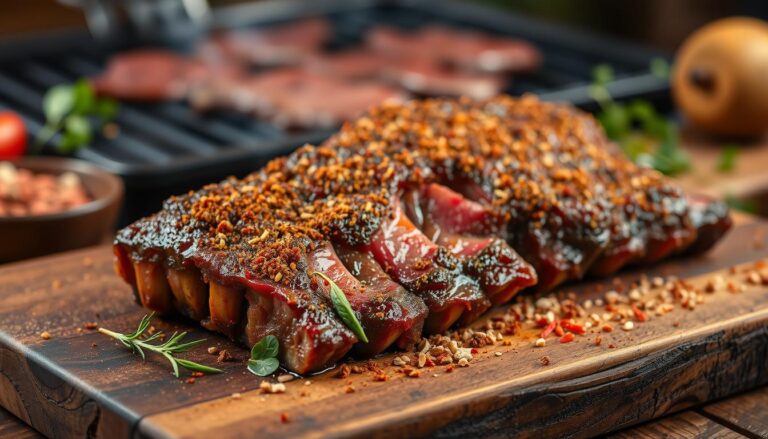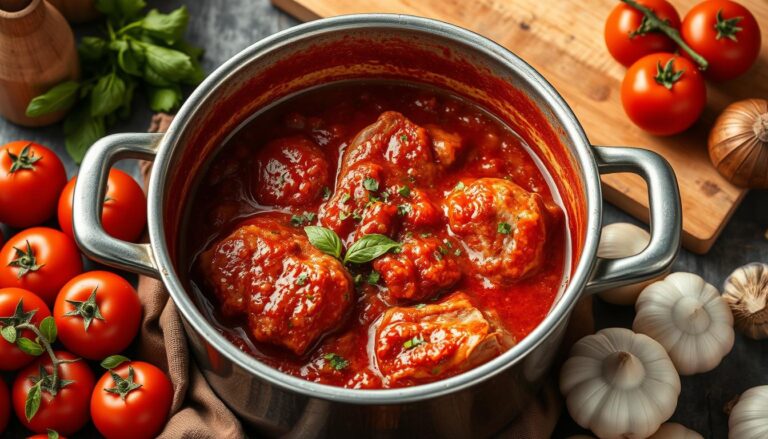Authentic Caputo Pizza Dough Recipe: Tips for Perfect Italian Pizza Crust
Table of Contents
When you think of pizza, what comes to mind? Is it the smell of freshly baked dough, the sound of bubbling cheese, or the joy of sharing slices with loved ones? For many, the essence of a great pizza lies in its crust. The base of any pizza can make or break the experience, and that’s where an authentic Caputo pizza dough recipe comes into play. With the right ingredients and techniques, you can create a pizza that rivals your favorite pizzeria.
In this comprehensive guide, you’ll learn everything you need to know to craft the perfect Italian pizza crust. You’ll discover the unique qualities of Caputo flour, the essential ingredients for your dough, step-by-step instructions to make it, and expert tips to ensure your pizza turns out beautifully every time. Get ready to embark on a culinary adventure that will elevate your pizza-making skills to new heights.
Understanding Caputo Flour: The Secret Ingredient
What is Caputo Flour?
Caputo flour, hailing from Naples, Italy, is renowned among pizza enthusiasts for its high protein content and finely milled texture. But what makes this flour so special? The secret lies in its unique composition. Caputo flour is often classified as “00” flour, which means it’s ground to an extremely fine consistency. This fine milling is crucial because it helps create a dough that is incredibly elastic and easy to work with, perfect for achieving that coveted Neapolitan-style pizza.
The Importance of Flour Type
Using Caputo flour can transform your homemade pizza. It allows for better hydration, which contributes to a lighter, airier crust. This is essential for achieving the puffy edges that are characteristic of authentic Italian pizzas. Other types of flour may not yield the same results, making it essential to stick to high-quality Caputo flour when making your pizza dough.
Key Properties of Caputo Flour
- Protein Content: Caputo flour typically has a protein content between 11-12.5%, providing excellent gluten structure.
- Absorption: This flour can absorb more water than regular all-purpose flour, which is crucial for a dough that is both chewy and light.
- Fermentation: Caputo flour is designed to ferment beautifully, resulting in a richer flavor and better texture.
Understanding these properties will help you appreciate why Caputo flour is the choice of many pizza chefs worldwide. By using this flour, you’re investing in the quality of your pizza from the very beginning.
Essential Ingredients for Caputo Pizza Dough
Creating your pizza dough requires only a few simple ingredients, but their quality matters significantly. Here’s what you’ll need:
| Ingredient | Quantity |
|---|---|
| Caputo 00 Flour | 4 cups |
| Water | 1 1/2 cups |
| Salt | 2 tsp |
| Yeast | 1 tsp |
| Olive Oil | 1 tbsp |
Breakdown of Ingredients
- Caputo 00 Flour: The foundation of your dough. This flour provides the structure and texture that makes your crust unique.
- Water: Ideally at room temperature, this is the key to activating your yeast and hydrating your flour.
- Salt: Essential for flavor, salt also strengthens gluten, improving the dough’s elasticity.
- Yeast: This leavening agent helps your dough rise, creating that airy texture.
- Olive Oil: Adds flavor and helps to tenderize the dough, making it easier to stretch.
Using fresh, high-quality ingredients will directly impact the final taste and texture of your pizza crust. Make sure to source these components before you start your dough-making journey.
Step-by-Step Caputo Pizza Dough Recipe
Now that you have your ingredients ready, let’s dive into the step-by-step process for making your Caputo pizza dough.
1. Mix Ingredients
Begin by combining the Caputo flour, salt, and yeast in a large mixing bowl. Stir these dry ingredients together until well combined. This step ensures that the yeast and salt are evenly distributed throughout the flour.
2. Add Water
Next, gradually add the room-temperature water to your dry mixture. Use your hand or a wooden spoon to mix the ingredients until they start to come together. You want to ensure that the flour is fully hydrated and that there are no dry spots.
3. Knead the Dough
Once the mixture forms a rough dough, it’s time to knead. Transfer the dough to a floured surface and knead for about 10 minutes. Use the heel of your hand to push the dough away from you, then fold it back over itself. Repeat this motion until the dough is smooth and elastic. You can check for readiness by performing the “windowpane test”: stretch a small piece of dough; if it stretches thin without tearing, it’s ready.
4. Proof the Dough
After kneading, place the dough in a lightly oiled bowl and cover it with a damp cloth or plastic wrap. Allow it to rise in a warm area for 2-3 hours, or until it doubles in size. This fermentation period is crucial as it develops flavor and texture.
5. Shape the Dough
Once your dough has risen, turn it out onto a floured surface and gently deflate it. Divide the dough into equal portions, usually about 200-250 grams each, for individual pizzas. Shape each portion into a ball by tucking the edges into the center and rolling it on the counter until smooth.
6. Final Rest
Let the dough balls rest for an additional 30 minutes to an hour under a damp cloth. This allows the gluten to relax, making it easier to stretch out when you’re ready to shape your pizzas.
Tips for Perfect Italian Pizza Crust
Achieving the perfect crust requires attention to detail and a few tried-and-true techniques. Here are some tips to ensure your pizza turns out just right.
Avoid Common Mistakes
- Over-Kneading: While kneading is important, overdoing it can lead to a tough crust. Keep your kneading to the recommended 10 minutes.
- Under-Proofing: Rushing the fermentation process can result in dense dough. Be patient; allow the dough to rise fully for the best texture.
- Temperature Control: Pizza dough benefits from warmth during proofing, but excessive heat can kill the yeast. Aim for a cozy environment (around 75°F).
Perfecting Your Technique
- Use Room Temperature Ingredients: Starting with room temperature water and oil helps integrate everything smoothly.
- Hydration Matters: The more hydrated your dough, the better the crust. Don’t be afraid to adjust water levels slightly based on humidity and flour absorption.
- Experiment with Fermentation: Longer fermentation can lead to deeper flavors. Consider cold fermentation in the fridge for 24-48 hours for enhanced taste.
By paying attention to these details, you’ll set yourself up for pizza-making success.
Baking Your Caputo Pizza
Once your dough is ready, it’s time to bake! Here’s how to ensure your pizza comes out perfectly.
Preheat Your Oven
Preheat your oven to the highest setting, usually around 500°F (or 260°C). If you have a pizza stone, place it in the oven while it heats up. This ensures the stone gets super hot, allowing your pizza to cook evenly and develop a crispy crust.
Shape Your Pizza
- Lightly flour your work surface and take one dough ball.
- Gently press it down into a disc, then use your fingers to stretch it outwards, maintaining a thicker edge for the crust.
- If the dough resists stretching, let it rest for a few minutes before trying again.
Add Toppings
Now comes the fun part! Add your favorite sauce, cheese, and toppings. Keep it simple to highlight the quality of your crust and ingredients. A classic Margherita with fresh mozzarella, basil, and a drizzle of olive oil is a timeless choice.
Bake Your Pizza
Carefully transfer your pizza onto the preheated pizza stone using a pizza peel or the back of a baking sheet. Bake for about 10-12 minutes, or until the crust is golden and the cheese is bubbly. Keep an eye on it as baking times can vary based on oven and toppings.
Frequently Asked Questions (FAQ)
What makes Caputo pizza dough different from regular pizza dough?
Caputo pizza dough stands out primarily due to the use of Caputo 00 flour, which provides a finer texture and superior hydration. This results in a crust that is light, airy, and chewy—characteristics that are hallmark of authentic Neapolitan pizzas.
Can I use Caputo flour for other recipes?
Absolutely! While it’s best known for pizza, Caputo flour is also excellent for making pasta, bread, and even pastries. Its fine texture and high protein content lend themselves well to various Italian dishes.
How do I store leftover dough?
If you have leftover dough, wrap it tightly in plastic wrap and store it in the refrigerator for up to three days. You can also freeze it for up to three months. Just ensure it’s well wrapped to prevent freezer burn.
Conclusion
Crafting an authentic Caputo pizza dough is a rewarding endeavor that will elevate your pizza nights to an entirely new level. By understanding the qualities of Caputo flour, following the steps laid out in this guide, and applying the tips for perfecting your crust, you’ll be well on your way to creating a masterpiece that impresses everyone.
Now it’s your turn! Roll up your sleeves, gather your ingredients, and dive into the world of homemade pizza. Share your creations and experiences with friends and family, and don’t hesitate to experiment with different toppings and flavors. Your perfect Italian pizza awaits!







